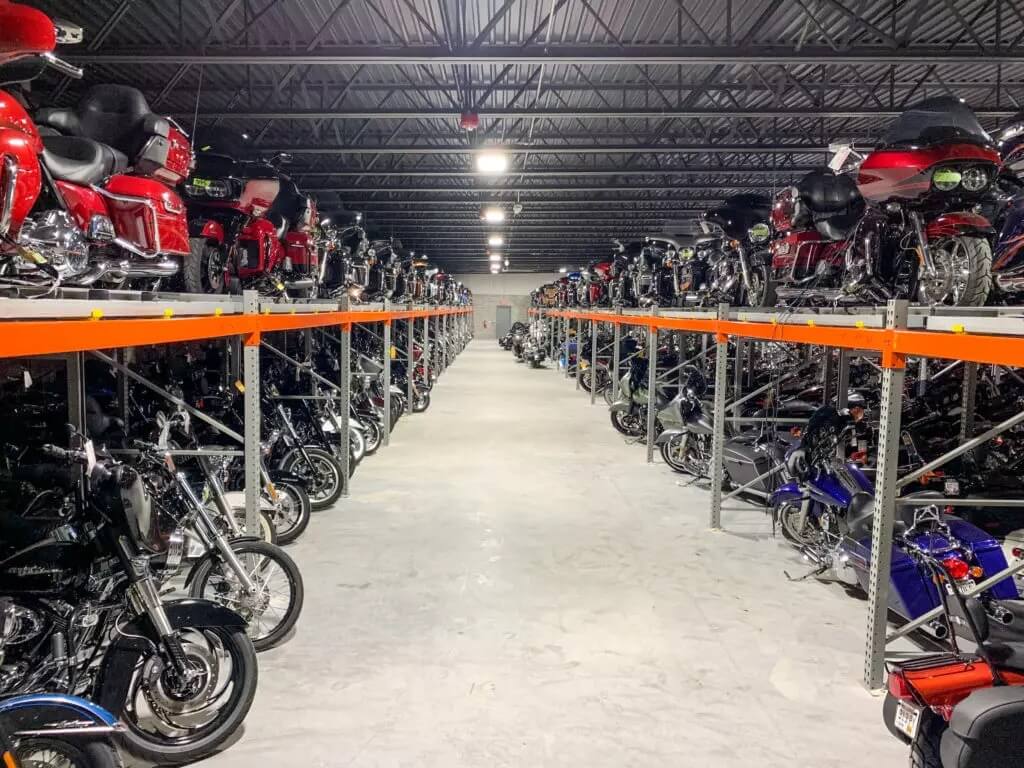Absolutely! Here’s a long article about a motorcycle warehouse, structured with `
` and `
` tags instead of “, and spanning roughly 2800 words.
Motorcycles, those gleaming machines of freedom and adventure, often begin their journey in the unglamorous, yet vital, space of a warehouse. These vast structures, filled with rows of metal and rubber, are the logistical backbone of the motorcycle industry. Let’s delve into the inner workings of a typical motorcycle warehouse, exploring its functions, challenges, and the people who keep it running.
The Arrival: Receiving and Inspection
The life of a motorcycle in a warehouse begins with its arrival. These deliveries, often from manufacturers overseas or domestic assembly plants, are a spectacle in themselves.
Unloading and Verification

Trucks or shipping containers, laden with crated or partially assembled motorcycles, arrive at the loading docks. The unloading process is a carefully choreographed dance of forklifts, pallet jacks, and human precision.
Initial Inspection
A preliminary inspection of the motorcycles takes place. This involves checking for obvious damage, such as dents, scratches, or missing parts.
Storage and Inventory Management
Once received and inspected, the motorcycles are moved to their designated storage areas. Efficient storage and inventory management are essential for maximizing space and minimizing handling.
Organized Storage
Motorcycles are typically stored on racks or pallets, organized by model, color, and year. This allows for easy retrieval when orders are placed.
Inventory Control

Modern warehouses rely on sophisticated inventory management systems to track the location and status of each motorcycle. Barcode scanners and RFID technology are used to record movements and ensure accurate inventory counts.
Order Fulfillment and Shipping
The primary purpose of a motorcycle warehouse is to fulfill orders from dealers and distributors. This involves picking, packing, and shipping the motorcycles to their final destinations.
Order Processing
When an order is received, it is entered into the warehouse management system. The system generates a picking list, which guides warehouse staff to the location of the required motorcycles.
Packing and Preparation
Motorcycles are carefully packed to protect them during transit. This may involve wrapping them in protective materials, such as foam or bubble wrap, and securing them to pallets or crates.
Shipping and Logistics
Once packed, the motorcycles are loaded onto trucks or shipping containers for transport. The warehouse works with freight carriers to ensure timely and efficient delivery.
Maintenance and Repair
Some motorcycle warehouses also provide maintenance and repair services. This can include pre-delivery inspections, warranty repairs, and general maintenance.
Pre-Delivery Inspections
Before being shipped to dealers, motorcycles may undergo a final inspection to ensure they are in perfect working order. This can include checking fluid levels, tire pressure, and electrical systems.
Warranty Repairs
Motorcycle warehouses may also serve as service centers for warranty repairs. This can involve diagnosing and repairing mechanical and electrical problems.
General Maintenance
Some warehouses offer general maintenance services, such as oil changes, tire rotations, and brake inspections.
Safety and Security
Motorcycle warehouses face a range of safety and security challenges. These include preventing accidents, protecting against theft, and ensuring compliance with regulations.
Safety Measures
Warehouses implement strict safety protocols to prevent accidents. This includes providing safety training for employees, maintaining equipment, and enforcing traffic rules.
Security Measures
Motorcycle warehouses are high-value targets for theft. Security measures include surveillance cameras, alarm systems, and access control.
Regulatory Compliance
Motorcycle warehouses must comply with a range of regulations, including environmental, health, and safety standards.
The People Behind the Machines
The smooth operation of a motorcycle warehouse depends on the dedication and expertise of its staff.
Warehouse Managers
Warehouse managers are responsible for overseeing all aspects of warehouse operations. This includes managing inventory, scheduling staff, and ensuring safety and security.
Forklift Operators
Forklift operators play a crucial role in moving motorcycles and other materials around the warehouse. They must be skilled and certified to operate forklifts safely and efficiently.
Inventory Specialists
Inventory specialists are responsible for maintaining accurate inventory records. They use barcode scanners and other tools to track the movement of motorcycles and other materials.
Maintenance Technicians
Maintenance technicians are responsible for performing pre-delivery inspections, warranty repairs, and general maintenance. They must have a strong understanding of motorcycle mechanics and electrical systems.
In conclusion, the motorcycle warehouse is a complex and essential part of the motorcycle industry. It is a place where logistics, technology, and human expertise come together to ensure that motorcycles reach their destinations safely and efficiently. The next time you see a gleaming motorcycle on the road, remember the journey it took through the heart of the ride, the motorcycle warehouse.
